Apr
19
2022
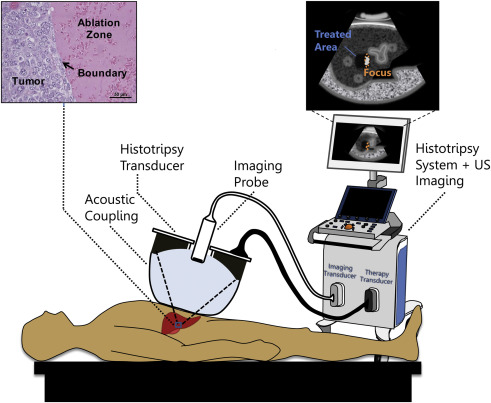 Sound can be a powerful form of energy, and is often underappreciated. Remember the weirding modules in Dune, that focused and amplified sound as a weapon? That is not an unrealistic technology. If you are near a powerful explosion, even without being exposed to heat or shrapnel, you can be killed by the pressure wave alone, which can cause significant internal damage.
Sound can be a powerful form of energy, and is often underappreciated. Remember the weirding modules in Dune, that focused and amplified sound as a weapon? That is not an unrealistic technology. If you are near a powerful explosion, even without being exposed to heat or shrapnel, you can be killed by the pressure wave alone, which can cause significant internal damage.
Sound has also been used for years as a medical tool. You are probably most familiar with ultrasound technology, a non-invasive and safe way to image living tissue in real time. Many parents are familiar with this technology, as it is safe enough to image a growing fetus. But sound can also be used medically to destroy, and this application has many potential advantages.
One such technique is called High-Intensity Focused Ultrasound, or histotripsy. This is the latest approach to using sound to destroy unwanted tissue inside the body. There are older techniques that would use sound wave to heat up tissue and cause thermal damage. Histrotripsy uses a different method, and early research suggests this is a potentially significant step forward. The basics of the technology is the use of two highly focused beams of very short (<50 microseconds) bursts of high intensity sound. Where the beams cross, I am assuming through constructive interference, the intensity is great enough to cause cavitation within the tissue.
Cavitation is negative pressure that will cause a bubble of gases to expand inside the cells. These bubbles then collapse, resulting in significant mechanical stress on the cells that destroy them. Repeated applications of the histotripsy over the same area causes these areas of cavitation to coalesce into one large area filled with “liquified homogenate” – i.e. goo. This process can be targeted by simultaneous ultrasound imaging (the cavities appear bright on ultrasound), which makes the entire setup fairly portable and convenient.
Continue Reading »
Feb
22
2022
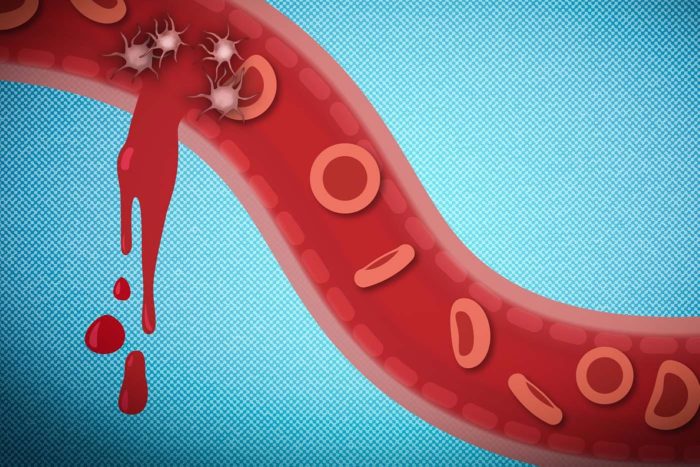 “Nanotechnology” is one of the buzzwords of our time. It is used the exact same way “space age technology” was used in the last few decades of the 20th century, and to a lesser extent even to today. It creates a marketing halo of advanced cutting-edge technology, but it’s not clear what it actually means. The term has loosely been used to refer to any tech that involves any component that has one dimension which is between 1-100 nanometers (nm). If only one dimension is in this size range then we are dealing with a nanosheet, and if one of the remaining two dimensions is a lot longer than the other this is a nanoribbon. If two dimensions are in the nano range then that is a nanofiber (long) or nanorod (short), and if it’s hollow then a nanotube. If all three dimensions are between 1-100 nm then that is a nanoparticle. The nanoparticles themselves could be anything. Since many natural substances have features in this size range, it’s easy to invoke the “nanotechnology” buzzword. For this reason synthetic machines that operate on the nanoscale have been dubbed “molecular nanotechnology” to distinguish this from the now overused regular nanotechnology label.
“Nanotechnology” is one of the buzzwords of our time. It is used the exact same way “space age technology” was used in the last few decades of the 20th century, and to a lesser extent even to today. It creates a marketing halo of advanced cutting-edge technology, but it’s not clear what it actually means. The term has loosely been used to refer to any tech that involves any component that has one dimension which is between 1-100 nanometers (nm). If only one dimension is in this size range then we are dealing with a nanosheet, and if one of the remaining two dimensions is a lot longer than the other this is a nanoribbon. If two dimensions are in the nano range then that is a nanofiber (long) or nanorod (short), and if it’s hollow then a nanotube. If all three dimensions are between 1-100 nm then that is a nanoparticle. The nanoparticles themselves could be anything. Since many natural substances have features in this size range, it’s easy to invoke the “nanotechnology” buzzword. For this reason synthetic machines that operate on the nanoscale have been dubbed “molecular nanotechnology” to distinguish this from the now overused regular nanotechnology label.
That said, the ability to determine and control features of objects at the nanoscale is incredibly useful, and in many areas of material science is taking our technology to the next level. We are not yet at the point where we can create sophisticated nanomachines to do our bidding at the nanoscale, but that is the long-term goal. In the meantime we are finding lots of uses for nanoparticles, specifically in medicine. It has been argued that biology is nanotechnology, and if we want to interact with biological systems at their most fundamental scale then we need to get down to the nanoscale. One potential application of nanoparticle medicine is to reduce internal bleeding.
Trauma is the number one cause of death in people 45 years of age and younger. Internal bleeding is a major contributor to trauma-related death, because it may be difficult to identify prior to getting to a hospital, and it may be difficult or even impossible to stop the bleeding by applying pressure. In fact there are technical terms for such bleeds, such as noncompressible torso hemorrhage (NCTH). But what if we can help stop the bleeding from the inside?
Continue Reading »
Feb
18
2022
 Most people I know, whether personally or as my patients, want to take positive steps to improve their health and quality of life. Unfortunately, many people who make a decision to get healthier rely on information in the popular culture and being promoted by the self-help industry. Much of this information is wrong or misleading. When people want to improve their diet, they often tell me they only eat organic whole foods, or perhaps they go paleo or raw if they are really motivated. But these changes are worthless – just expensive distractions.
Most people I know, whether personally or as my patients, want to take positive steps to improve their health and quality of life. Unfortunately, many people who make a decision to get healthier rely on information in the popular culture and being promoted by the self-help industry. Much of this information is wrong or misleading. When people want to improve their diet, they often tell me they only eat organic whole foods, or perhaps they go paleo or raw if they are really motivated. But these changes are worthless – just expensive distractions.
Older patients concerned about their memory and cognitive function tend to focus on two things, diet and “brain games”. As I have discussed before, brain games basically don’t work. If you play Wordle, you get better at Wordle. That’s it. Diet is a little more complicated, as some people, especially older adults, may be deficient in certain nutrients, particularly B12. Even here people get distracted by the notion of “super foods” or some magical supplement. The reality is, for most people, just have a good well-rounded diet and eat plenty of fruits and vegetables. Vitamin B12, however, largely comes from meat. It is also a difficult vitamin to absorb (it requires a cofactor) and some people have impaired absorption or it wanes as they get older. The solution here is to get regular checkups with your PMD, who will check your B12 level and supplement if necessary. You may even need a B12 shot if your GI absorption is really impaired.
But we haven’t even discussed the factors that have perhaps the greatest effect on the cognitive function of healthy adults. I emphasize healthy, because if someone has a disease that affects their brain function that is a separate issue. Perhaps the most significant single factor affecting memory is healthy adults is sleep. Often sleep gets difficult as we get older for various reasons. People become accustomed to chronically poor sleep, and underestimate its affect on their cognitive function and memory. So step one should always be – fix your sleep. You may be able to do this with improved sleep hygiene, but if this doesn’t fix the problem again you need to see your doctor. You may have a sleep disorder, such as sleep apnea (difficulty breathing when asleep), and this will wreak havoc on your memory. Some people also struggle with anxiety and depression, and this can impair memory and focus. So address those issues as well.
Continue Reading »
Jan
27
2022
 The Twitterverse is outraged, appropriately, it turns out, that Florida Acting Surgeon General Joseph Ladapo, who is undergoing confirmation hearings, refused to state when asked directly four times, that the COVID vaccines are safe and effective. At first he straight-up dodged the question, saying, “The question is a scientific one.” Uh, yeah, and you’re an MD, PhD with a degree in public health (i.e. a medical scientist) so answer the question. When pushed repeatedly he finally did answer that the vaccines have:
The Twitterverse is outraged, appropriately, it turns out, that Florida Acting Surgeon General Joseph Ladapo, who is undergoing confirmation hearings, refused to state when asked directly four times, that the COVID vaccines are safe and effective. At first he straight-up dodged the question, saying, “The question is a scientific one.” Uh, yeah, and you’re an MD, PhD with a degree in public health (i.e. a medical scientist) so answer the question. When pushed repeatedly he finally did answer that the vaccines have:
“reasonable effectiveness for the prevention of hospitalization and death” and “relatively low effectiveness for prevention” against transmission over time.
This is not accurate. They have extremely high effectiveness at preventing hospitalization and death. The risk of dying from COVID is 53 times greater for those who are unvaccinated vs those who are fully boosted. Regarding prevention of transmission, Ladapo is narrowly correct but misleading through selective reporting. Studies show that a fully vaccinated person has a relative risk of 0.32 of passing on the virus compared to an unvaccinated person (so an unvaccinated person who gets COVID is 3 times more likely to pass it on). This is not “low effectiveness”, but the same data does also show that this protection wanes over time, and is mostly gone three months after the second shot. However, this is for vaccinated but not boosted individuals. Other studies show that boosted individuals have a 93% relative reduction in their risk of contracting COVID (even Delta), either symptomatic or asymptomatic, and of course people who never catch the virus cannot pass it on.
Continue Reading »
Jan
11
2022
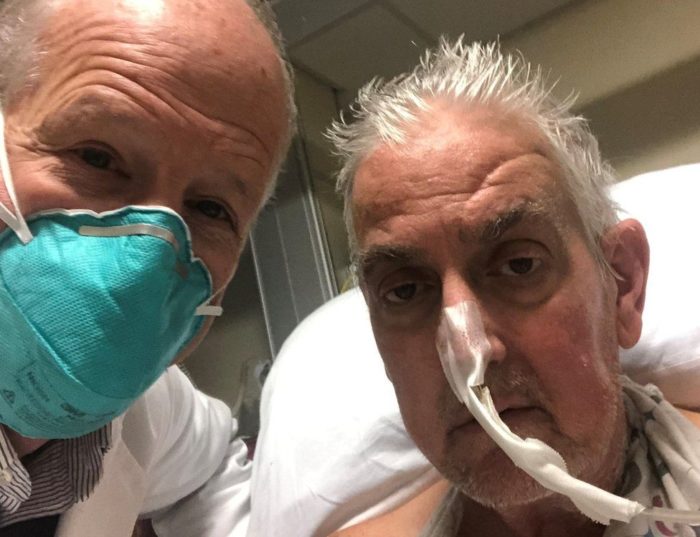 David Bennett, 57, had terminal heart disease. He was bed-ridden and kept alive on a heart machine for the last six weeks, a temporary measure at best. He was deemed too sick for a donor heart transplant, which are in limited supply and given to the patients most likely to benefit from them. Essentially, his options were over and death was imminent and unavoidable. For this reason he was considered a viable candidate for an experimental procedure, and the FDA granted emergency use authorization under its compassionate use guidelines.
David Bennett, 57, had terminal heart disease. He was bed-ridden and kept alive on a heart machine for the last six weeks, a temporary measure at best. He was deemed too sick for a donor heart transplant, which are in limited supply and given to the patients most likely to benefit from them. Essentially, his options were over and death was imminent and unavoidable. For this reason he was considered a viable candidate for an experimental procedure, and the FDA granted emergency use authorization under its compassionate use guidelines.
On January 7th he received a heart transplant from a pig that had been genetically modified to minimize rejection. This is a true milestone – the first successful transplant of a living organ from a non-human donor into a living human (organ xenotransplantation). The reason for the caveats are the fact that pig valves are routinely transplanted into people, but these valves are fixed and therefore not living tissue. Also, you may remember the girl with the baboon heart, Baby Fae, an infant who received a baboon heart in 1984. She lived for 21 days, but this was not considered a viable procedure, which is why it was not repeated. Also, last year a genetically modified pig kidney was transplanted into a human, but they were brain dead at the time.
It remains to be seen how long David Bennett with survive with his new pig heart. Rejection is still a major issue, and he will need to be on powerful immunosuppressant drugs. There is also a reason he was not considered a good candidate for a human heart transplant. But even if the procedure is moderately successful this would represent a true milestone, our entry into the age of routine organ xenotransplantation with genetically modified organs.
Continue Reading »
Dec
16
2021
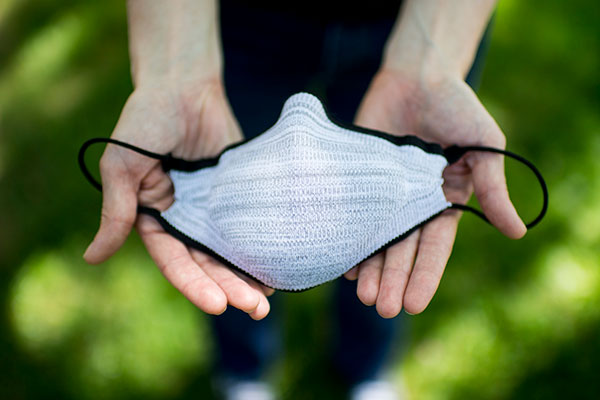 The COVID-19 pandemic is not done with us yet. We are still in the middle of the delta surge, and while delta will eventually pass, the omicron variant is right on its heels. In the US we just passed the milestone of 800,000 people dead from COVID with over 50 million cases. More Americans died of COVID in 2021 than in 2020, although in 2021 most deaths were among the unvaccinated. The vaccines remain our best defense against this pandemic, which is why it is tragic that there are still holdouts for tribal or ideological reasons. Regardless, it is extremely likely that we will be dealing with COVID through 2022. It is also likely that COVID is now endemic, and while it may fade down to flu-like proportions, we will also very likely have to deal with it for years to come. COVID is also likely not the last respiratory pandemic we will have to deal with this century.
The COVID-19 pandemic is not done with us yet. We are still in the middle of the delta surge, and while delta will eventually pass, the omicron variant is right on its heels. In the US we just passed the milestone of 800,000 people dead from COVID with over 50 million cases. More Americans died of COVID in 2021 than in 2020, although in 2021 most deaths were among the unvaccinated. The vaccines remain our best defense against this pandemic, which is why it is tragic that there are still holdouts for tribal or ideological reasons. Regardless, it is extremely likely that we will be dealing with COVID through 2022. It is also likely that COVID is now endemic, and while it may fade down to flu-like proportions, we will also very likely have to deal with it for years to come. COVID is also likely not the last respiratory pandemic we will have to deal with this century.
All of this is why masks are still important. We just have to accept the fact that face masks are now an important part of life. At least for the foreseeable future we will need face masks as a layer of protection in health care settings, large indoor crowds, among vulnerable populations, and for anyone who is symptomatic. Walking around in the public maskless, sneezing and coughing from a “cold” is no longer socially acceptable. If you want to avoid the mask in small or outdoor crowds and in gatherings of family and friends, then get fully vaccinated. But even then, there are some situations where masks provide an extra needed layer of protection.
There are at least two important questions relating to mask wearing. The first is – do they really work? The short answer is yes, they do. But obviously there is some complexity here. When worn properly, and in the right setting, masks provide a measurable level of protection from a respiratory infection. They protect you and they protect others. The latest evidence to support this conclusion looked at countries with and without face mask policies. They found:
Average COVID-19 mortality per million was 288.54 in countries without face mask policies and 48.40 in countries with face mask policies.
Continue Reading »
Nov
29
2021
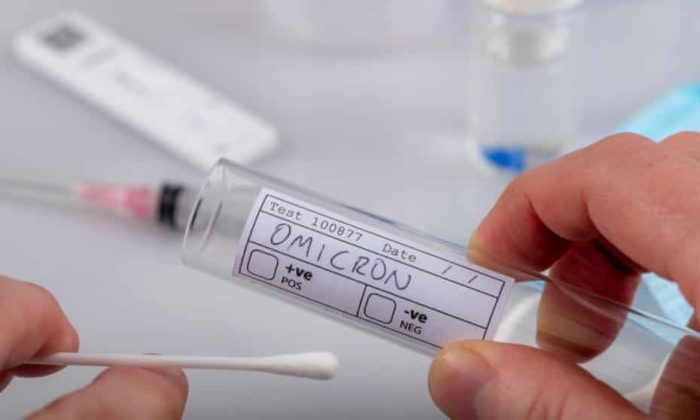 Experts knew, and had been warning, that delta was not going to be the last Greek letter to sweep across the world. The World Health Organization (WHO) tracks variants of the SARS-CoV-2 virus which causes COVID-19. They track variants of interest (VOI) which have been identified as potentially problematic, and variants of concern (VOC) which have been demonstrated to have either increased infectivity, increased illness severity, and/or evasion of preventive measures (such as vaccines or masks). These variants are given a Greek letter designation as they are added to the list. What is now called the omicron variant has been added to the list of VOC. Here’s what we know so far.
Experts knew, and had been warning, that delta was not going to be the last Greek letter to sweep across the world. The World Health Organization (WHO) tracks variants of the SARS-CoV-2 virus which causes COVID-19. They track variants of interest (VOI) which have been identified as potentially problematic, and variants of concern (VOC) which have been demonstrated to have either increased infectivity, increased illness severity, and/or evasion of preventive measures (such as vaccines or masks). These variants are given a Greek letter designation as they are added to the list. What is now called the omicron variant has been added to the list of VOC. Here’s what we know so far.
The virus appears to have originated in South Africa. Fortunately, South Africa has a robust surveillance system and labs that can grow the virus and do a whole-genome sequence. They were therefore able to identify the variant quickly and share their information with the world. This isn’t the first variant to originate in South Africa, which raises the question of why this is the case? Increased surveillance may be part of the answer, but is not able to fully explain why. Some scientists speculate that South Africa’s large population of HIV infected and inadequately treated people provide a fertile breeding ground for new variants.
Variants are caused by mutations in the virus genome, some of which may alter proteins and therefore viral functions. SARS-CoV-2 does not have a particularly high mutation rate, but because we are having a world-wide pandemic there are lots of opportunities for new mutations to occur. It’s possible that when a person has a prolonged infection the viruses in their system are under selective pressure, so any mutation that might partly evade the immune system will be favored. Those with untreated HIV have an impaired immune response. This may be just enough to provide some selective pressure but not enough to fight off the infection, creating a breeding ground for new variants.
Continue Reading »
Aug
31
2021
 We are approaching two years into this pandemic and we still haven’t proved the origins of the SARS-CoV-2 virus. However, this is not unusual at all, and in itself is not suspicious. It took 13 years to identify the origin of SARS, and we have never identified the origins of some Ebola outbreaks. But what do we know about the origins of SARS-CoV-2? The question has become highly political, which is unfortunate. Let’s review what the actual evidence has to say.
We are approaching two years into this pandemic and we still haven’t proved the origins of the SARS-CoV-2 virus. However, this is not unusual at all, and in itself is not suspicious. It took 13 years to identify the origin of SARS, and we have never identified the origins of some Ebola outbreaks. But what do we know about the origins of SARS-CoV-2? The question has become highly political, which is unfortunate. Let’s review what the actual evidence has to say.
If we go back to the beginning of the pandemic, the early scientific investigation of the virus found that it was 96% identical to a bat coronavirus in the region. Zoonotic spillover is common, and the virus originated in a part of the world with wet markets and close contact with wild animal populations. Direct examination of the virus also did not show any telltale signs of deliberate manipulation. There has been some scientific debate on this topic, but in the end there is general agreement among scientists that there is no smoking gun of genetic manipulation. For these reasons it was concluded early that the most probable origin of COVID was from animals, either directly from bat to human or through an intermediary.
This conclusion was based on examination of the virus itself and the the reservoirs of similar viruses in the region. This was, and by many still is, considered the most likely origin. Researchers have searched for the precise animal origin, and so far have not found it, but that is not in itself unusual or suspicious.
Continue Reading »
Aug
20
2021
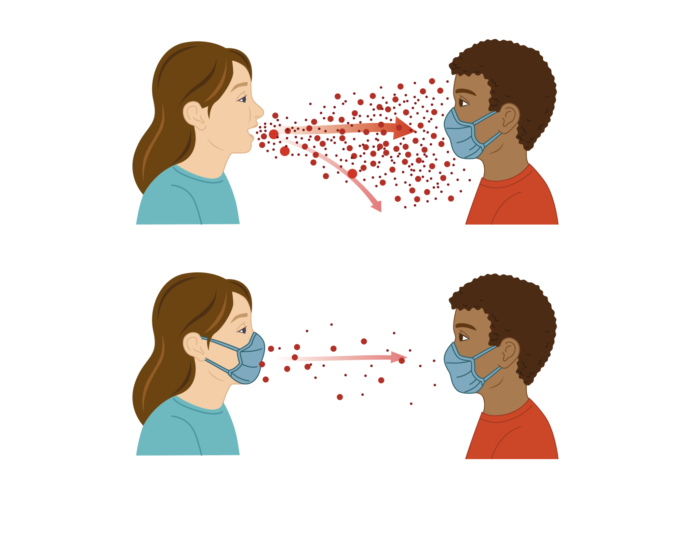 By coincidence, in November 2019 I did an investigation into the question – does wearing a facemask reduce the risk of transmitting or getting a respiratory infection? I was in Australia at the time and noticed that their large Asian population frequently wore facemasks in public. It seemed odd, and my initial hypothesis was that this was likely a cultural behavior without supporting evidence. I was surprised to find, when I reviewed the primary literature at the time, that I was wrong. In fact, masks do work, in certain circumstances.
By coincidence, in November 2019 I did an investigation into the question – does wearing a facemask reduce the risk of transmitting or getting a respiratory infection? I was in Australia at the time and noticed that their large Asian population frequently wore facemasks in public. It seemed odd, and my initial hypothesis was that this was likely a cultural behavior without supporting evidence. I was surprised to find, when I reviewed the primary literature at the time, that I was wrong. In fact, masks do work, in certain circumstances.
The basic concept is simple – when you breath, talk, cough, or sneeze you exhale tiny droplets, and if you have a viral respiratory illness those droplets are crawling with virus. Masks reduce the spread of those droplets, and otherwise you are basically spraying everyone with a shower of viruses. They are less effective at protecting the wearer, but they do reduce the risk of getting sick as well. However, that reduction is only statistically detectable if you are in a high-risk situation to begin with. This includes being in the same room with someone who is sick, or being in a crowd during an epidemic. Out in the general population not during an epidemic the baseline risk of catching a virus is low, and so there is no statistically detectable benefit from wearing a mask.
This conclusion was based on information available before anyone ever heard the word “Covid-19”. Who would have thought at the time that this entirely scientific question would become so political so fast? The efficacy of mask wearing suddenly became a very important question, so now we have much more research, and some specific to SARS-CoV-2. This research has raised our confidence that masks do, in fact, have efficacy (science-speak for “they work”), but has also drilled down to greater detail. Where does the research stand now?
Continue Reading »
Jul
27
2021
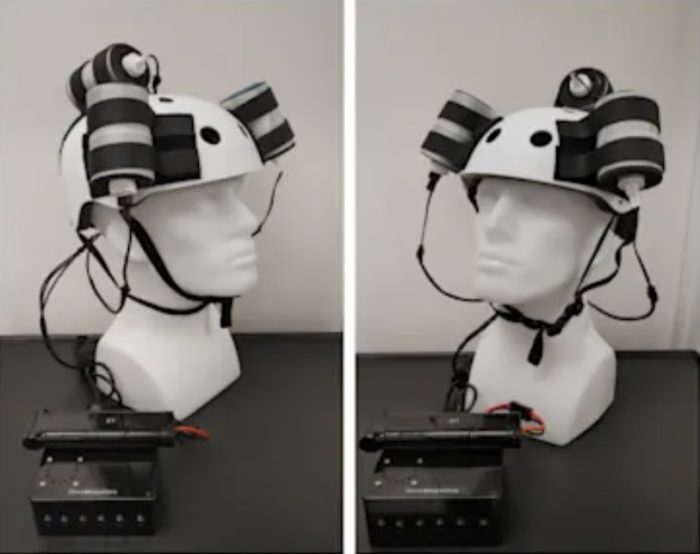 Magnets for healing have a bad rap, one they rightfully deserve. Magnetic snake-oil devices with all sorts of bogus medical claims are as old as magnets themselves. It may have something to do with the fact that magnets seem like magic, exerting and invisible force at a distance. So it’s often an easy sell. Also, magnets are real and do produce a real energy field (unlike the non-existent “life energy” fields common in alternative medicine). So it makes any claims for them seem all the more plausible.
Magnets for healing have a bad rap, one they rightfully deserve. Magnetic snake-oil devices with all sorts of bogus medical claims are as old as magnets themselves. It may have something to do with the fact that magnets seem like magic, exerting and invisible force at a distance. So it’s often an easy sell. Also, magnets are real and do produce a real energy field (unlike the non-existent “life energy” fields common in alternative medicine). So it makes any claims for them seem all the more plausible.
Because of this, magnets do have real medical applications. Perhaps most common is MRI scans – magnetic resonance imaging. But also there is a lot of research into TMS, transcranial magnetic stimulation, for a variety of neurological indications. Our bodies are electromagnetic devices, and we can alter cell function with electricity and magnetic fields. The trick is, applying them in such a way that they can be exploited for benefit rather than causing harm or having no real effect.
For the consumer with insufficient scientific or medical background, it can be very challenging to tell the difference between a legitimate magnetic medical device and a scam. One good rule of thumb – if the magnet is fairly weak (refrigerator magnet level) it is probably worthless. Real biologically active magnets tend to be powerful. Another slightly more technical fact is that biologically active magnets tend to have an alternating field, while magnetic quack devices tend to have a static magnetic field (which has little biological effect).
Continue Reading »
 Sound can be a powerful form of energy, and is often underappreciated. Remember the weirding modules in Dune, that focused and amplified sound as a weapon? That is not an unrealistic technology. If you are near a powerful explosion, even without being exposed to heat or shrapnel, you can be killed by the pressure wave alone, which can cause significant internal damage.
Sound can be a powerful form of energy, and is often underappreciated. Remember the weirding modules in Dune, that focused and amplified sound as a weapon? That is not an unrealistic technology. If you are near a powerful explosion, even without being exposed to heat or shrapnel, you can be killed by the pressure wave alone, which can cause significant internal damage.
 “Nanotechnology” is one of the buzzwords of our time. It is used the exact same way “space age technology” was used in the last few decades of the 20th century, and to a lesser extent even to today. It creates a marketing halo of advanced cutting-edge technology, but it’s not clear what it actually means. The term has loosely been used to refer to any tech that involves any component that has one dimension which is between 1-100 nanometers (nm). If only one dimension is in this size range then we are dealing with a nanosheet, and if one of the remaining two dimensions is a lot longer than the other this is a nanoribbon. If two dimensions are in the nano range then that is a nanofiber (long) or nanorod (short), and if it’s hollow then a nanotube. If all three dimensions are between 1-100 nm then that is a nanoparticle. The nanoparticles themselves could be anything. Since many natural substances have features in this size range, it’s easy to invoke the “nanotechnology” buzzword. For this reason synthetic machines that operate on the nanoscale have been dubbed “molecular nanotechnology” to distinguish this from the now overused regular nanotechnology label.
“Nanotechnology” is one of the buzzwords of our time. It is used the exact same way “space age technology” was used in the last few decades of the 20th century, and to a lesser extent even to today. It creates a marketing halo of advanced cutting-edge technology, but it’s not clear what it actually means. The term has loosely been used to refer to any tech that involves any component that has one dimension which is between 1-100 nanometers (nm). If only one dimension is in this size range then we are dealing with a nanosheet, and if one of the remaining two dimensions is a lot longer than the other this is a nanoribbon. If two dimensions are in the nano range then that is a nanofiber (long) or nanorod (short), and if it’s hollow then a nanotube. If all three dimensions are between 1-100 nm then that is a nanoparticle. The nanoparticles themselves could be anything. Since many natural substances have features in this size range, it’s easy to invoke the “nanotechnology” buzzword. For this reason synthetic machines that operate on the nanoscale have been dubbed “molecular nanotechnology” to distinguish this from the now overused regular nanotechnology label. Most people I know, whether personally or as my patients, want to take positive steps to improve their health and quality of life. Unfortunately, many people who make a decision to get healthier rely on information in the popular culture and being promoted by the self-help industry. Much of this information is wrong or misleading. When people want to improve their diet, they often tell me they only eat organic whole foods, or perhaps they go paleo or raw if they are really motivated. But these changes are worthless – just expensive distractions.
Most people I know, whether personally or as my patients, want to take positive steps to improve their health and quality of life. Unfortunately, many people who make a decision to get healthier rely on information in the popular culture and being promoted by the self-help industry. Much of this information is wrong or misleading. When people want to improve their diet, they often tell me they only eat organic whole foods, or perhaps they go paleo or raw if they are really motivated. But these changes are worthless – just expensive distractions. The
The  David Bennett, 57, had terminal heart disease. He was bed-ridden and kept alive on a heart machine for the last six weeks, a temporary measure at best. He was deemed too sick for a donor heart transplant, which are in limited supply and given to the patients most likely to benefit from them. Essentially, his options were over and death was imminent and unavoidable. For this reason he was considered a viable candidate for an experimental procedure, and the FDA granted emergency use authorization under its compassionate use guidelines.
David Bennett, 57, had terminal heart disease. He was bed-ridden and kept alive on a heart machine for the last six weeks, a temporary measure at best. He was deemed too sick for a donor heart transplant, which are in limited supply and given to the patients most likely to benefit from them. Essentially, his options were over and death was imminent and unavoidable. For this reason he was considered a viable candidate for an experimental procedure, and the FDA granted emergency use authorization under its compassionate use guidelines. The COVID-19 pandemic is not done with us yet. We are still in the middle of the delta surge, and while delta will eventually pass, the omicron variant is right on its heels.
The COVID-19 pandemic is not done with us yet. We are still in the middle of the delta surge, and while delta will eventually pass, the omicron variant is right on its heels.  Experts knew, and had been warning, that delta was not going to be the last Greek letter to sweep across the world. The World Health Organization (WHO)
Experts knew, and had been warning, that delta was not going to be the last Greek letter to sweep across the world. The World Health Organization (WHO)  We are approaching two years into this pandemic and we still haven’t proved the origins of the SARS-CoV-2 virus. However, this is not unusual at all, and in itself is not suspicious. It took 13 years to identify the origin of SARS, and we have never identified the origins of some Ebola outbreaks. But what do we know about the origins of SARS-CoV-2? The question has become highly political, which is unfortunate. Let’s review what the actual evidence has to say.
We are approaching two years into this pandemic and we still haven’t proved the origins of the SARS-CoV-2 virus. However, this is not unusual at all, and in itself is not suspicious. It took 13 years to identify the origin of SARS, and we have never identified the origins of some Ebola outbreaks. But what do we know about the origins of SARS-CoV-2? The question has become highly political, which is unfortunate. Let’s review what the actual evidence has to say. By coincidence,
By coincidence,  Magnets for healing have a bad rap,
Magnets for healing have a bad rap, 




